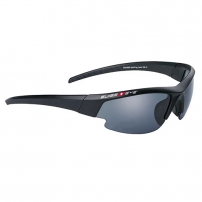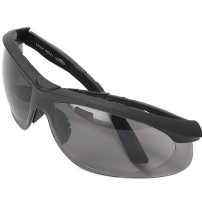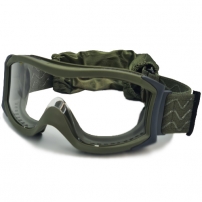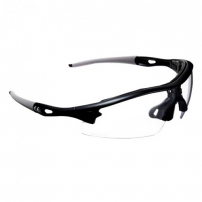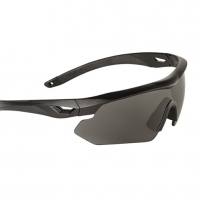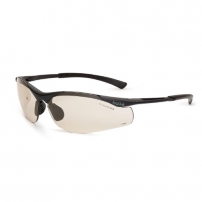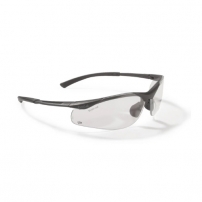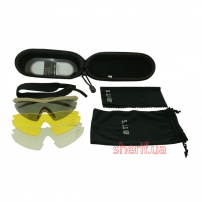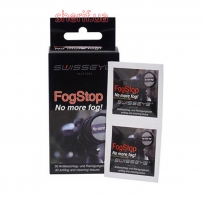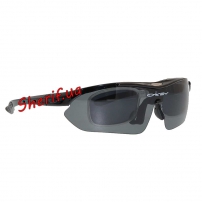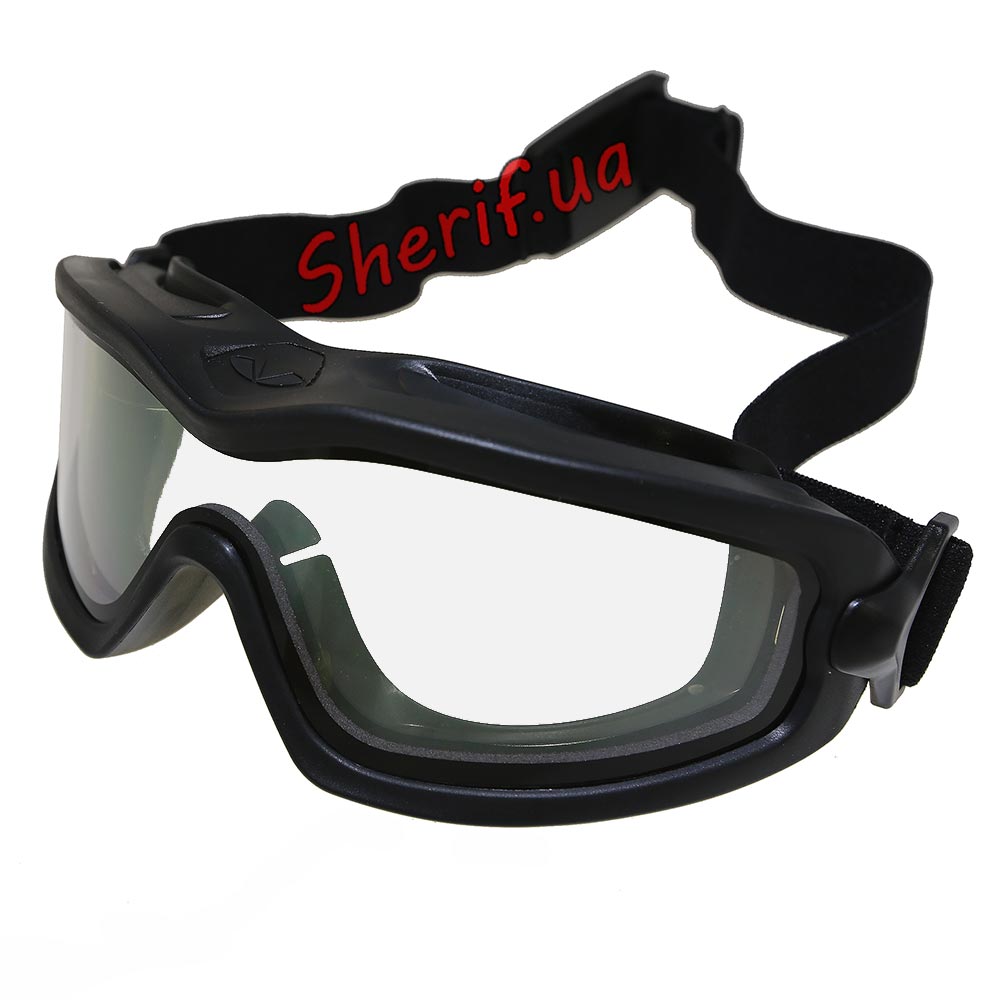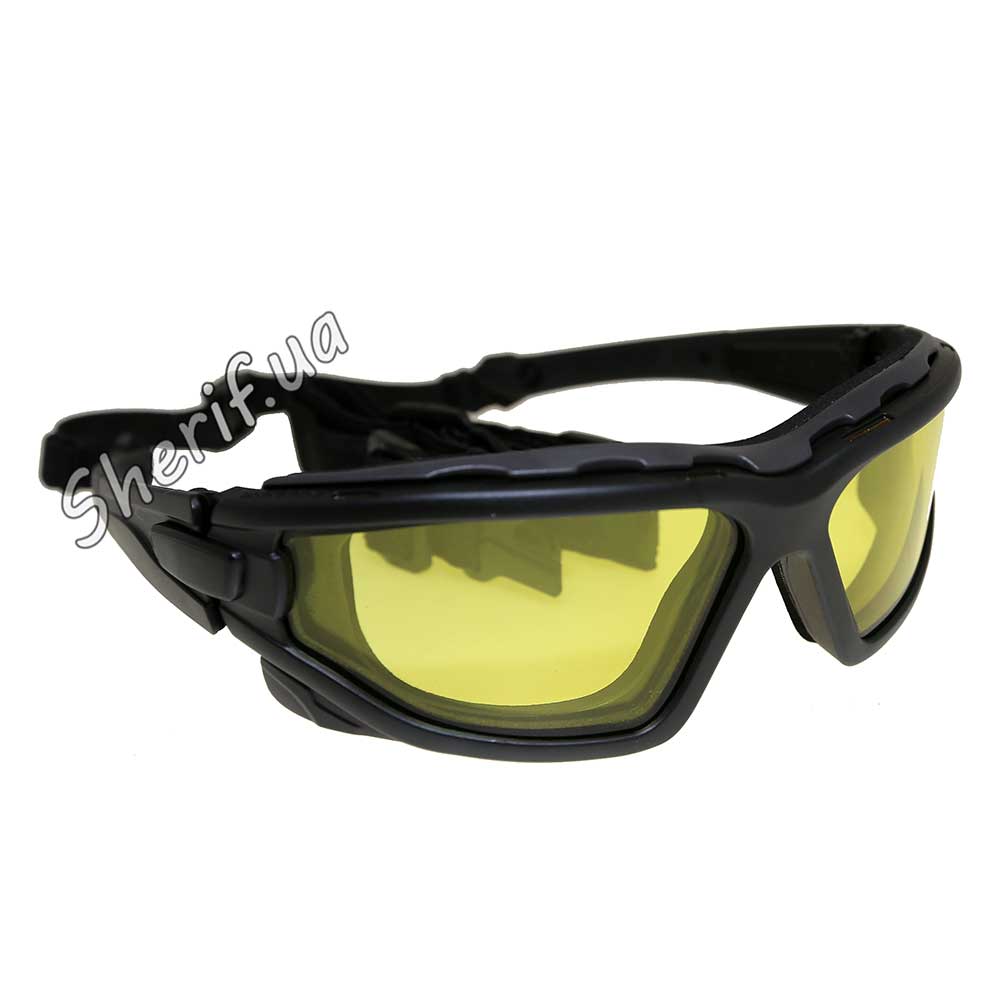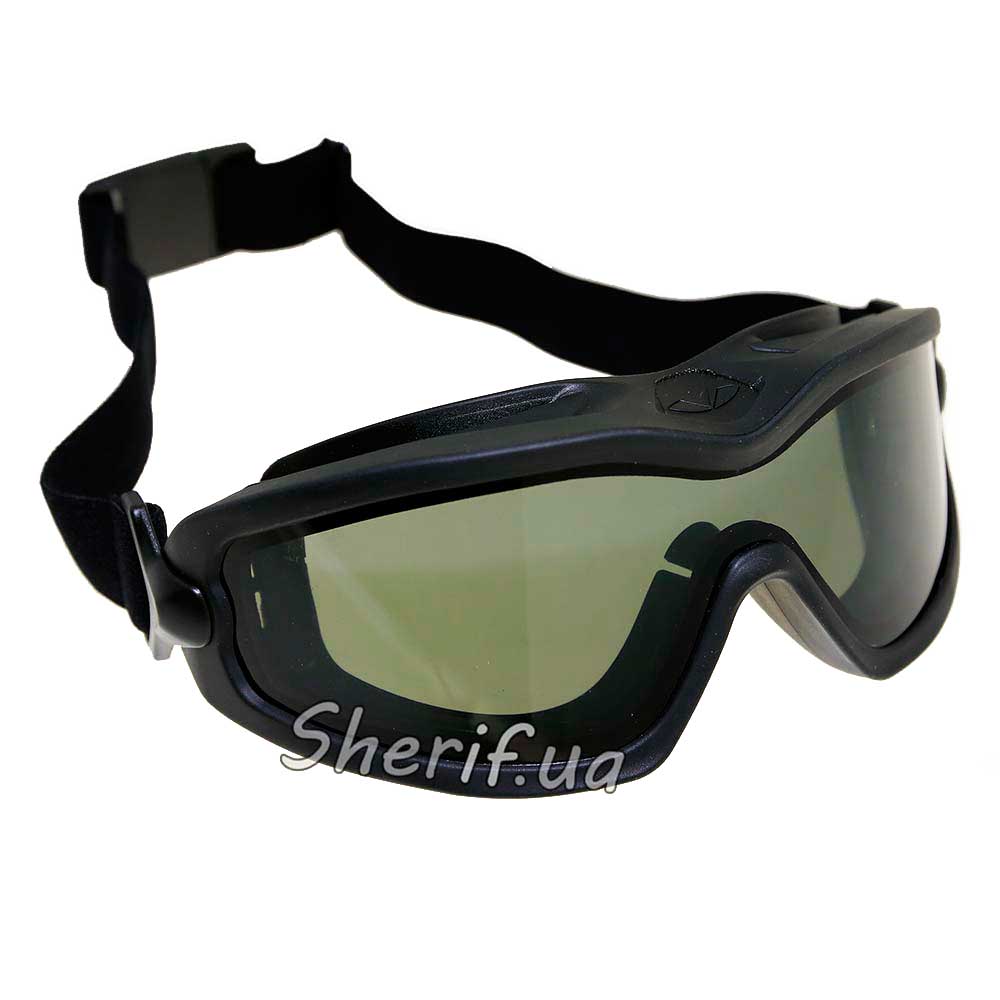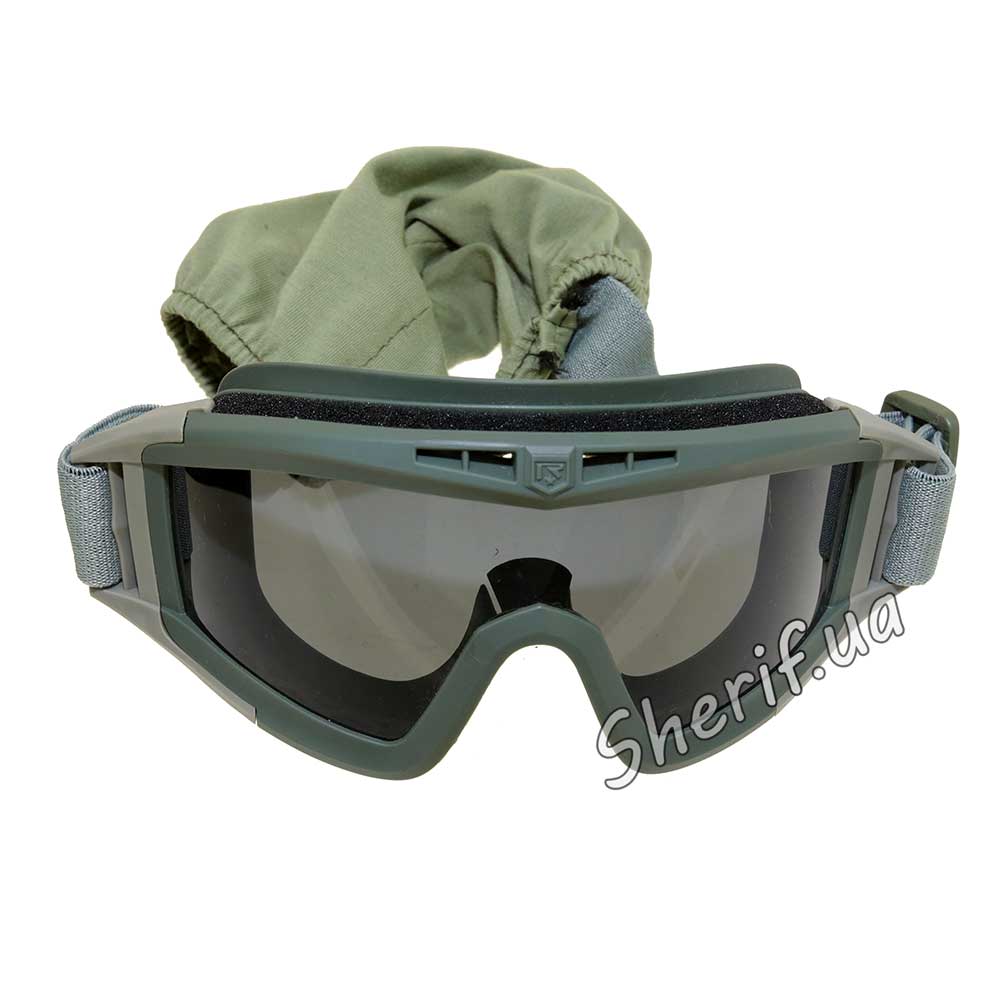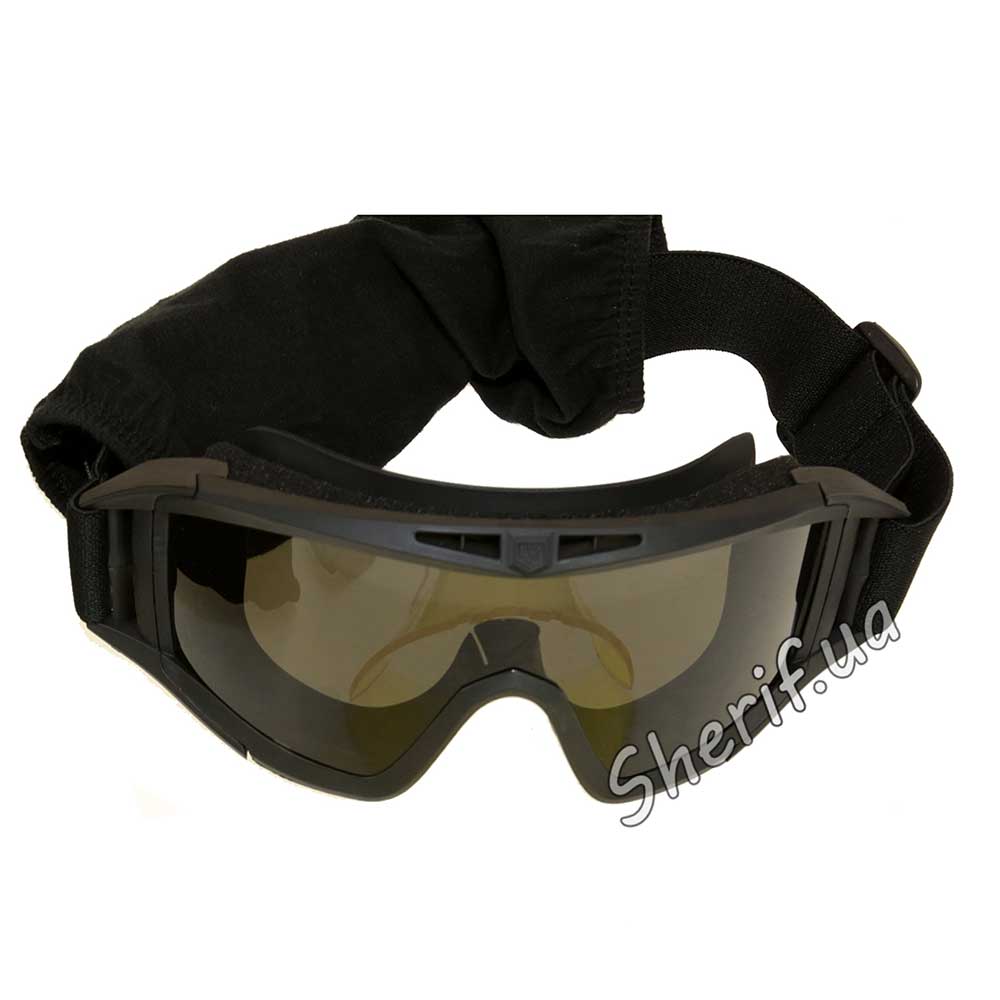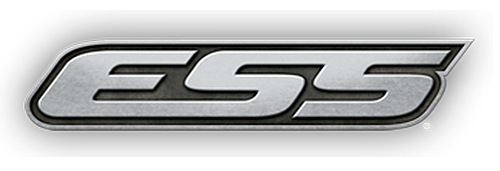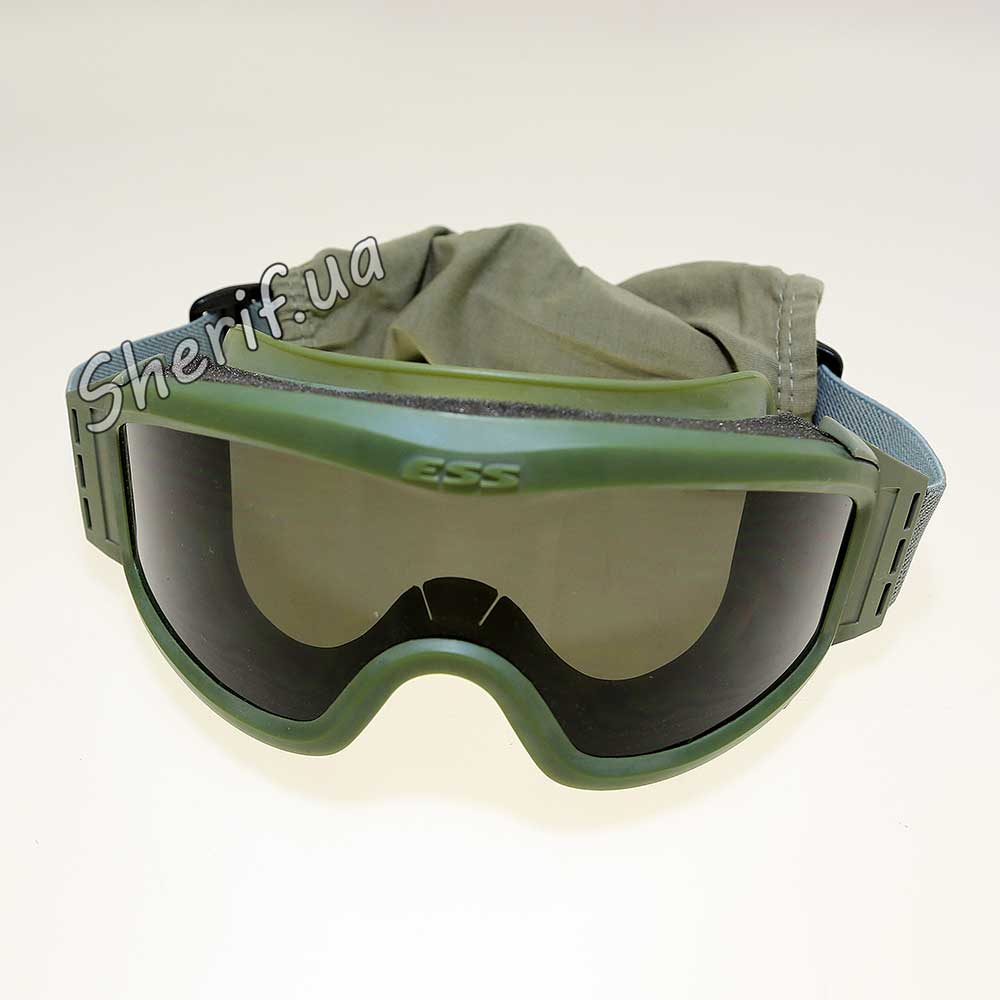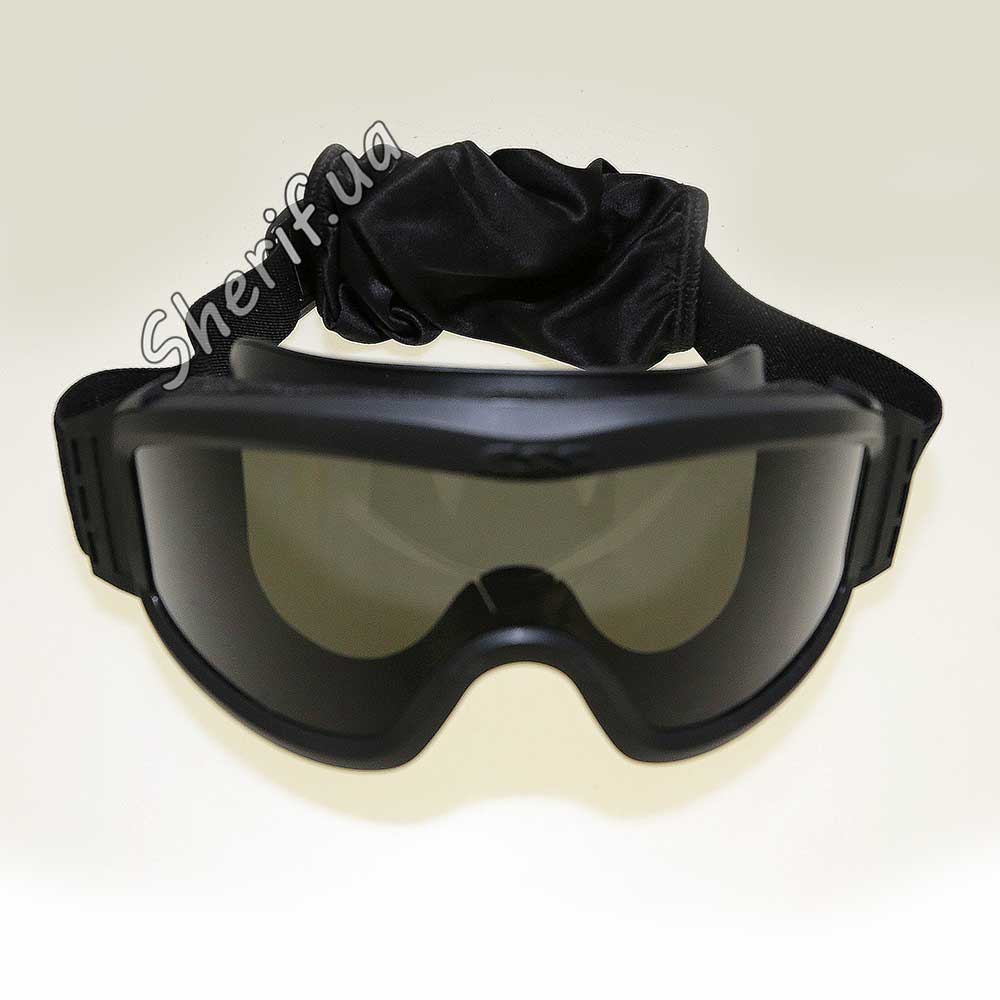√ Tactical shatterproof goggles and masks








| Продолжение каталога см. на след.страницах |
Goggles Tactical (Ballistic) and Protective Masks
1. The history of eye protection
2. Goggles or Glasses. Types of Tactical Points
3. Quality and bullet resistance standards
4. The main manufacturing companies in the Ukrainian market
5. Where to buy tactical glasses in Ukraine
Necessity: shooting tactical goggles or a tactical mask is one of the most important elements of military equipment . They are also called protective and anti-fragmentation.
For whom: the army, rescuers, special forces and police, hunters and lovers of sports shooting.
Protection against: ricochet, stones and metal fragments, shrapnel, shot and bullets, as well as laser sights , dust, ultraviolet, water, fog, wind.
Availability and free sale - the best samples of protective anti-fragmentation and tactical goggles and masks of foreign brands, produced in accordance with all international requirements, can be purchased on the Ukrainian military ammunition market. Ukraine does not produce ballistic goggles .
Be careful, distinguish between civilian and military standards of protective tactical glasses !
1. History of Military Tactical Glasses
1880 (p. Johnson) - around this time, the history of the creation of goggles began. For their manufacture, two layers of translucent dense fabric were used. They were supposed to protect the eyes of industrial workers only from heat and bright light, but did not provide protection from shock.
1885 (John Crane Woods) - English inventors tried to glue two layers of glass together. At the same time, there were other attempts to create protection for the eyes . For example, cellulose nitrate was glued between two pieces of glass. This product was not successful and was not in demand due to high production costs and low quality.
1914 (Edouard Benedictus) - Laminated safety glass is patented in the USA. During World War I, toughened safety glass was used to make small, round lenses in gas masks and for windshields on military vehicles and aircraft.
1940s - they came up with a special design of goggles , which were actively used as protection for welders and builders.
1960s - The US government funded experimental ballistic testing of various types of glass and plastics for potential use in tactical eyewear . The requirements of these tests remain relevant today. After that, polycarbonate became the standard material used for ballistic or, as they are also called, tactical glasses . And all the research since this early work has included the study of manufacturing efficiency and layering techniques and improving the ballistic performance of polycarbonates.
1970s (Wigglesworth) - ballistic tests are carried out on tempered glass with a special resin.
1996 (Belkin) - Describe a revolutionary ballistic eye protection with laser protection.
2006 (Hartley) - In the US, work is presented on the study of layered materials, which should protect the eyes from bullets of 9 mm automatic weapons. Research into the best eye protection is ongoing. And although the presented concept of tactical glasses was recognized as quite successful, its creators talk about the need for further progress in the production process in order to make this equipment more accessible and mass-produced.
2. Goggles or Glasses. Types of Tactical Points.
Goggles or Glasses - translated into Russian, these two words have the same meaning - glasses. But the appearance is different.
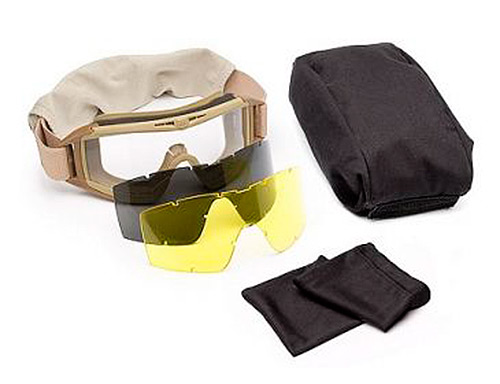 Tactical or ballistic goggles is more of a protective tactical mask , it covers most of the face. It looks like ski goggles . Not suitable for everyday wear. Can be used during close fire contact. Lenses must be protected from ultraviolet radiation and from the light of laser sights.
Tactical or ballistic goggles is more of a protective tactical mask , it covers most of the face. It looks like ski goggles . Not suitable for everyday wear. Can be used during close fire contact. Lenses must be protected from ultraviolet radiation and from the light of laser sights. 
And Tactical or ballistic glasses are tactical glasses that are indistinguishable from ordinary sunglasses in design and appearance. They are subject to the same requirements as goggles .
 Tactical goggles or a tactical mask can be worn over a protective helmet in the event that there is a cover .
Tactical goggles or a tactical mask can be worn over a protective helmet in the event that there is a cover .
Cover - a textile cover for a ballistic helmet, worn for additional disguise and convenience. Most often, helmets have a smooth surface, and the cover prevents the glasses from slipping off the helmet. In addition, some covers have special mounts that help keep the goggles on the helmet.
The frame is a particularly strong and fire-resistant plastic. In a tactical mask (goggles), the frame should not let the sun's rays, wind and dust pass under the protective mask. And the frame in tactical glasses (glasses) is light and does not fit to the face, except for some models.
Lenses - polycarbonate with a thickness of just over 2 mm. Polycarbonate is approximately 250 times stronger than glass. Usually the lenses are interchangeable for both types of glasses . Gray color is standard. And one of the popular colors for tactical glasses is yellow or orange. Yellow lenses increase contrast. Glasses of this color are suitable, in particular, for snipers.
3. Quality Standards for Ballistic Goggles and Goggles
There are two main quality standards for ballistic (tactical) goggles/masks .
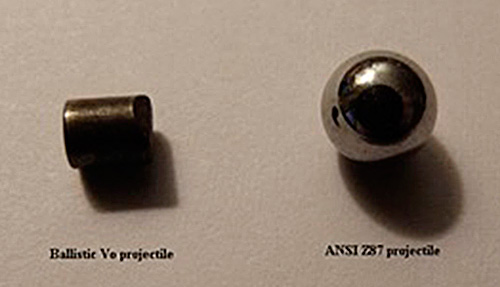 The ANSI Z87.1 marking is the standard for civilian equipment (industrial safety, not military). So, glasses with such a marking can only be called protective, but not military glasses .
The ANSI Z87.1 marking is the standard for civilian equipment (industrial safety, not military). So, glasses with such a marking can only be called protective, but not military glasses .
This goggle standard relies on a set of tests: impact with a 40g steel object, impact with a half-kilogram steel cone, impact with a 6mm diameter steel ball that travels at over 40m/s.
Glasses with this marking (ANSI Z87.) can only be used as protection against minor fragments, wind, dust and debris in explosions. Anti-fragmentation protection for such glasses can be called conditional. The level of protection is against small fragments, less than 4 mm in diameter, which fly at a speed of less than 50 m / s.
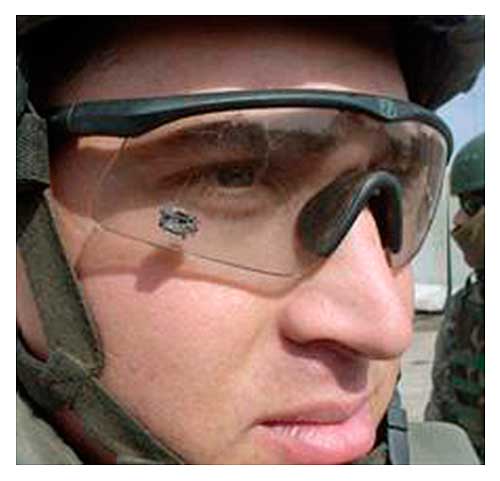 Marking MIL-PRF-31013 (MILitary) American military standard. This military ballistic standard includes several tests: MIL - PRF - 31013 ( glasses ) and MIL - DTL - 43511D ( masks, goggles ). The tests are significantly different from civilian ones. Here, the flight speed of a metal ball during testing (MIL - PRF - 31013) is at least 200 m / s. And the lens of a tactical mask, according to the standard, can withstand a 22-caliber bullet, which moves at a speed of 170 m / s. These are NATO standards.
Marking MIL-PRF-31013 (MILitary) American military standard. This military ballistic standard includes several tests: MIL - PRF - 31013 ( glasses ) and MIL - DTL - 43511D ( masks, goggles ). The tests are significantly different from civilian ones. Here, the flight speed of a metal ball during testing (MIL - PRF - 31013) is at least 200 m / s. And the lens of a tactical mask, according to the standard, can withstand a 22-caliber bullet, which moves at a speed of 170 m / s. These are NATO standards.
The European standard defines four levels of ballistic protection (EN166, 169, 170 and 172) that tactical goggles must provide.
"Increased robustness" (marked S). Steel ball: diameter - 22 mm, weight - 43 grams, hit from a distance of 38 meters.
"Low energy impact" (marking F). Steel ball: diameter - 6 mm, weight - 0.86 g, flight speed - 45 m / s.
"Medium energy impact" (marking B). Steel ball: the same size and weight, flight speed - 120 m / s.
"High energy impact" (marking A). Steel ball: the same size and weight, flight speed - 190 m / s.
APEL is a constantly updated list of authorized tactical goggles and goggles for the US Army. The list contains various commercial manufacturing brands, this information is freely available on the Internet. Current brands include: Oakley, ESS, Revision, UVEX, Wiley, Smith Optics .
4. Manufacturers of tactical glasses
Tactical glasses from PYRAMEX 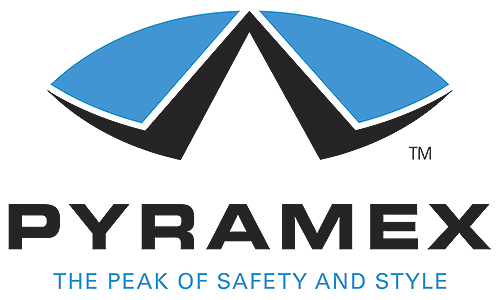
Founding of Pyramex - 1991, Tennessee, USA.
Pyramex Safety Products LLC manufactures and develops personal protective equipment for millions of users around the world. Piramex has over 2000 distributors in the USA, Canada, Europe, South America and Africa. All PYRAMEX products are independently tested and meet the required safety requirements and standards. Over the past 15 years, Pyramex has become one of the top 4 manufacturers by both civilian and military standards.
REVISION - a major manufacturer of tactical glasses 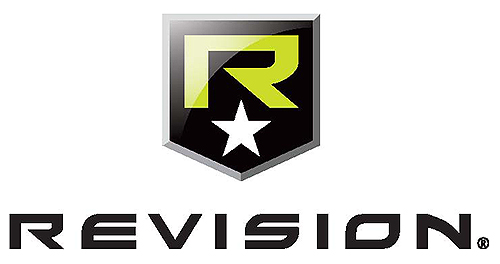
Date of foundation of REVISION : 2001, the first contract with the US Army received in 2006.
The most famous product models: Sawfly, Hellfly, Desert Locust.
REVISION calls itself a team of professionals that saves people's lives. The R&D department of the company is made up of industry experts. REVISION are real professionals in the development of protective optics, they have studied more than 100 years of human experience and have taken the best from physics, chemistry, materials science, laser protection technologies and composite production. Specific areas of expertise include optics , lens coatings, industrial design, advanced laser research, performance compliance, and testing. All together - a highly qualified team consisting of doctors of sciences, engineers, modern research specialists and industry masters.
REVISION unlocks the fundamentally new potential of defensive military technologies of the 21st century. The company maintains constant communication with the military around the world, understanding the importance of maintaining a constant dialogue between the end user and the manufacturer. Many of REVISION's employees are ex-military and enjoy a unique intuitive understanding of the changing needs of the modern soldier.
REVISION is a member of various committees, organizations and associations that work in the security and defense industries: the US Army Association (AUSA), the US National Guard Association (NGAUS), the Canadian Defense Industry Association (CADSI), the German Army Association (FKH), the National US Police Equipment Distributors Association (NAPED), US National Officers Association (NTOA).
Tactical glasses from ESS
ESS was founded in 1998.
 ESS is a subsidiary of Oakley, Inc. Oakley is a manufacturing brand founded in 1975. In 2007, Oakley was acquired by the Italian company Luxottica, also a manufacturer of eye optics. Oakley is on a par with such well-known brands of the same company as Ray-Ban and Persol.
ESS is a subsidiary of Oakley, Inc. Oakley is a manufacturing brand founded in 1975. In 2007, Oakley was acquired by the Italian company Luxottica, also a manufacturer of eye optics. Oakley is on a par with such well-known brands of the same company as Ray-Ban and Persol.
ECC is headquartered in Idaho and has a factory (ISO 9001:2008 quality system) in California.
ESS (Eye Safety Systems, Inc.) creates advanced face and eye protection systems for the military, law enforcement, firefighters, rescue and sports market . ESS is the sole authorized supplier of tactical (ballistic) eyewear to the US Marine Corps and is the leading supplier of equipment to all other branches of the US Department of Defense.
ESS works closely with the elite US military. They take into account all the problems and specifics of the conduct of the battle, the defense systems of this company were tested in the most adverse conditions. The entire line of ESS Eye Pro ballistic tactical goggles are engineered to meet the strictest US military standards and exceed civilian specifications.
Mil-tec goggles
Among other equipment, the Sturm Handels division called Mil-tech produces a great variety of goggles and masks for various purposes. At the moment, the range of the German company includes about 80 items of these products, including options in different colors of lenses and frames (including h. and camouflage), with different equipment.
For example, among them there are the following groups of goods:
- tactical glasses : anti-fragmentation, assault, rifle, glasses for glasses, mesh glasses, paratroopers, aviator glasses, pilot glasses
- protective masks : nets, smoke protection masks, gogless
- sports glasses
- sun and dustproof
- folding glasses
Examples: 
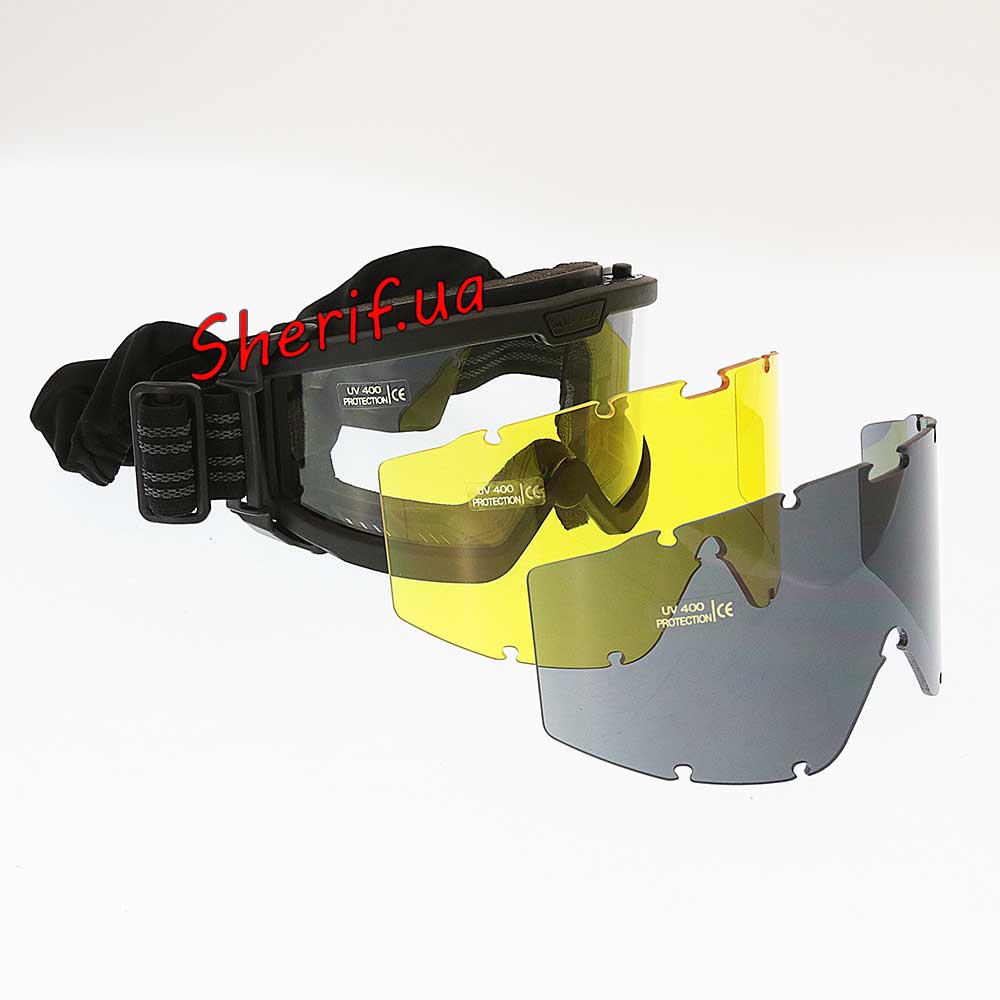
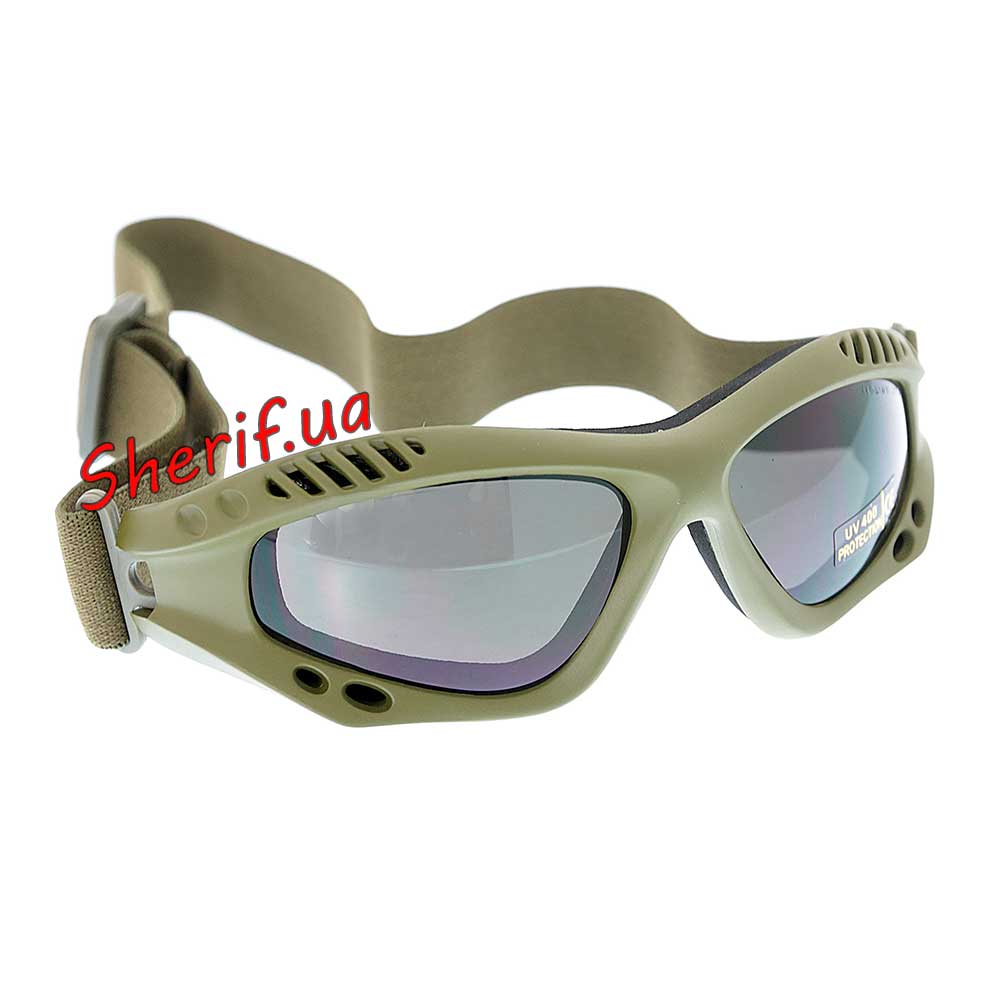
Some models are certified to the safety standards of American authorized research bodies, while the price is much lower than military prototypes.
5. Where in Ukraine to buy tactical glasses at an affordable price?
Of course, it is easier and more comfortable to do this in an online store . Voentorg Sheriff presents protective, anti-fragmentation, tactical goggles and masks of well-known brands and brands from the APEL list - a constantly updated list of authorized suppliers of tactical glasses for the US Army.
Prices in the military trade vary depending on the protection class, on ballistic stability and on the manufacturer. Sales assistants of the Sheriff store will help you make a choice. If it is convenient for you, make purchases in the online store at https://sherif.ua . This saves time and effort, but if you trust only your eyes and you need to “hold in your hands” or try on this or that product, come to our store. Store address in Dnepropetrovsk : Artem street, 9.
(068) 798-0000 (063) 798-9999 (068) 300-5000
(068) 300-5000


